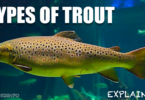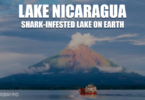When it comes to the fascinating world of marine life, the horseshoe crab often stands out as an enigmatic creature. Their ancient lineage and unique appearance have ignited the curiosity of researchers and nature enthusiasts for centuries. However, the most asked question about Horseshoe crabs is whether they are truly crustaceans or not. To uncover the answer, delve into the world of horseshoe crabs to explore their classification and evolutionary history.
What are Crustaceans?
Crustaceans are a diverse group of arthropods consisting of crabs, shrimps, lobsters, and other similar creatures. They have hard exoskeletons, segmented bodies, and jointed appendages which help them to perform various functions such as locomotion, detecting environmental cues (chemical signals and vibrations in the water), and feeding, necessary for survival in a changing oceanic environment.
What are Horseshoe Crabs?
Horseshoe crabs, or Limulus polyphemus, are not truly crabs although they resemble them remarkably. Horseshoe crabs are regarded to be the oldest extant species on Earth since their ancient ancestry is supposed to have split from other arachnids some 450 million years ago. Because of their unusual appearance and ecological significance, these organisms have captured the attention of researchers.
What are the Anatomical Features of Horseshoe Crabs?
Horseshoe crabs have a hard exoskeleton made of chitin which provides them support and protection. They possess numerous jointed appendages such as walking legs, helping them in locomotion. Interestingly, they have two pairs of antennae (pedipalps and chelicerae) used for sensory perception and feeding purposes.
Is A Horseshoe Crab a Crustacean?
At first glance, one must think of the horseshoe crab as a member of the crustacean family because they share an extreme resemblance to them. However, by considering their classification and evolutionary history, they are not marked as crustaceans. This is because horseshoe crabs are members of the Merostomata group of arachnids, whereas crustaceans are members of the Arthropoda phylum.
Of all existing arthropods on Earth, this historic ancestry has existed for more than 450 million years. They do share a resemblance to crustaceans but they differ significantly in terms of appendage structure, and respiratory mechanism as well.
Conclusion
Horseshoe crabs are not considered crustaceans because they belong to a separate taxonomic group known as Merostomata. Horseshoe crabs are lovely creatures with a fascinating evolutionary past and an unusual position in the natural world. They differ from other crustaceans by their book-shaped gills and horseshoe-shaped carapace. So the next time you see a horseshoe crab on a beach or in a book on marine biology, you can confidently say that it is not a crustacean.







